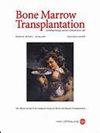Incidence of bacterial blood stream infections in patients with acute GVHD
IF 4.5
2区 医学
Q1 HEMATOLOGY
引用次数: 0
Abstract
Bacterial bloodstream infections (BSI) can be a substantial contributor to complications of GVHD treatment. The aim of this study was to determine the risk for BSI from neutrophil engraftment through day 100 post transplant in patients with acute GVHD (AGVHD) based on organ involvement and severity. Patients (n = 4064) who underwent an allogeneic hematopoietic stem cell transplant (HCT) reported to the CIBMTR registry were analyzed. Grade II-IV AGVHD occurred in 1607 (39.5%) patients and was associated with a greater day-100 incidence of post engraftment BSI than with grade 0/I (24.9 vs. 15.3%). Patients with grade III/IV AGVHD had the highest BSI risk (HR 2.45; 95% CI 1.99–3.0; p < 0.0001). Lower GI involvement increased BSI risk (HR 1.54; 95% CI 1.17–2.02; p = 0.0019). BSI post-engraftment through day 100 was associated with worse survival (HR 1.64, 95% CI 1.43–1.87; p < 0.001) and higher non-relapse mortality (NRM), (HR 2.22; 95% CI 1.91–2.59; p < 0.001). Those with stage III/IV GI involvement are at highest risk for BSI. Future studies evaluating novel methods for preventing BSI in these high risk populations are needed to reduce mortality associated with AGVHD.急性 GVHD 患者细菌性血流感染的发生率。
细菌性血流感染(BSI)可能是导致GVHD治疗并发症的一个重要因素。本研究旨在根据器官受累情况和严重程度,确定急性GVHD(AGVHD)患者从中性粒细胞移植到移植后第100天发生BSI的风险。研究分析了向CIBMTR登记处报告的接受异基因造血干细胞移植(HCT)的患者(n = 4064)。1607例(39.5%)患者发生了II-IV级AGVHD,与0/I级(24.9%对15.3%)相比,II-IV级AGVHD与100天内移植后BSI的发生率更高。III/IV 级 AGVHD 患者的 BSI 风险最高(HR 2.45; 95% CI 1.99-3.0; p
本文章由计算机程序翻译,如有差异,请以英文原文为准。
求助全文
约1分钟内获得全文
求助全文
来源期刊

Bone Marrow Transplantation
医学-免疫学
CiteScore
8.40
自引率
8.30%
发文量
337
审稿时长
6 months
期刊介绍:
Bone Marrow Transplantation publishes high quality, peer reviewed original research that addresses all aspects of basic biology and clinical use of haemopoietic stem cell transplantation.
The broad scope of the journal thus encompasses topics such as stem cell biology, e.g., kinetics and cytokine control, transplantation immunology e.g., HLA and matching techniques, translational research, and clinical results of specific transplant protocols. Bone Marrow Transplantation publishes 24 issues a year.
 求助内容:
求助内容: 应助结果提醒方式:
应助结果提醒方式:


